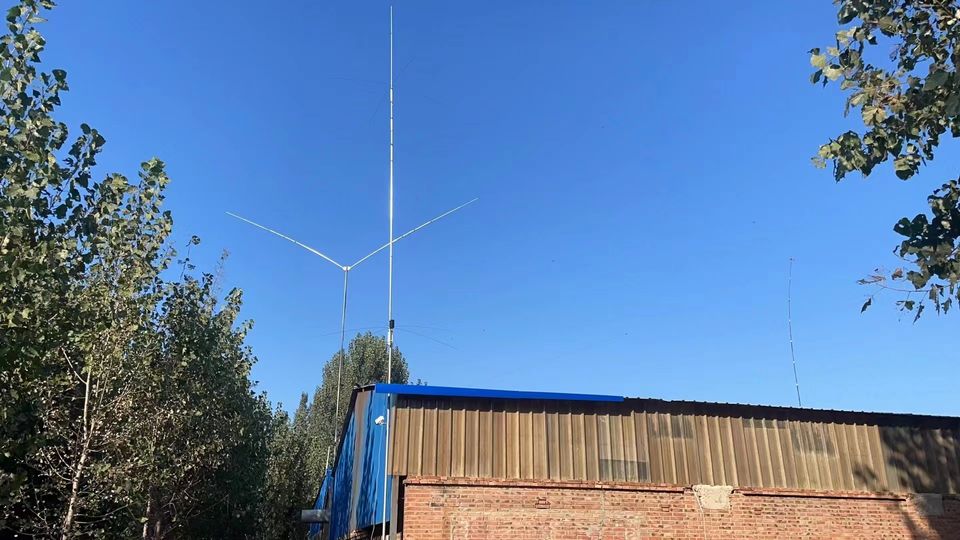
Send Inquiry
The Beginner's Guide to Radio Communication Equipment: Types, Applications, and Innovations
In a world seemingly dominated by smartphones and the internet, it's easy to overlook the pivotal role that radio communication equipment plays in our daily lives. From two-way radios relied upon by security personnel to ham radios cherished by amateur radio operators, the world of radio equipment is vast and diverse. Whether you're just starting your journey into this fascinating domain or simply looking to broaden your knowledge, you're in the right place. This beginner's guide is your gateway to understanding the different types of radio communication equipment, their applications, and the latest technological advancements. Moreover, we'll emphasize the importance of selecting a reputable supplier like Radio-GX. Let's embark on this illuminating journey!
Historical Perspective
Before we delve into the current landscape of radio communication equipment, let's take a moment to appreciate its rich history. Understanding its evolution is crucial to comprehending the complexity of modern radio equipment.
From the groundbreaking wireless telegraphy experiments of Guglielmo Marconi to the wartime applications of radio, the historical journey of radio communication is a testament to human ingenuity. Radio technology has come a long way, and the equipment we have today is the result of decades of innovation and refinement.
Types of Radio Communication Equipment
Now, let's explore the essential types of radio communication equipment and their various applications:
1. Two-way Radios
Two-way radios, commonly known as walkie-talkies, are handheld devices that allow individuals to communicate with one another. They work by transmitting and receiving voice signals over short distances, making them perfect for activities like hiking, camping, and event coordination. They're easy to use and don't require any infrastructure, making them a go-to choice for many outdoor enthusiasts and professionals.
2. Ham Radios
Ham radios, also known as amateur radios, serve both as a hobby and a valuable means of communication during emergencies. Ham radio operators, or "hams," enjoy experimenting with radio technology and connecting with people from around the world. In times of crisis, ham radios can provide a lifeline when other forms of communication fail, making them an essential tool for disaster preparedness.
3. CB Radios
Citizen's Band (CB) radios are simple and straightforward devices used for personal communication, often on the road. Popular among truckers, off-roaders, and travelers, CB radios allow individuals to chat within a limited range, making them handy for maintaining contact on long journeys or when exploring remote areas.
4. Marine Radios
Marine VHF radios are designed specifically for boating and maritime activities. They ensure safety and communication on the water, serving as a vital link between vessels and emergency services. Whether you're a sailor or a fisherman, marine radios are indispensable for staying connected and navigating the seas safely.
5. Aviation Radios
Aviation radios are essential tools in the cockpit of aircraft. They enable pilots to communicate with air traffic control, fellow crew members, and other aircraft. Clear and accurate communication is paramount for flight safety, and aviation radios play a crucial role in ensuring that messages are delivered efficiently and accurately.
Specialized Radio Equipment
Beyond the primary categories, specialized radio equipment serves unique purposes in various industries and hobbies:
1. Radio Scanners
Radio scanners are versatile devices used to listen to a wide range of radio frequencies, such as those used by police, fire departments, and weather services. Enthusiasts use scanners to stay informed about local events and public services. They provide real-time information about emergencies, weather updates, and public broadcasts.
2. Radio Transceivers
Radio transceivers, sometimes known as "ham rigs" in the amateur radio community, are versatile devices capable of both transmitting and receiving radio signals. They are used in a wide range of applications, from ham radio communication to public safety and commercial use. Transceivers are known for their adaptability and are prized for their reliability.
3. Radio Antennas
Radio antennas are essential components that enhance the performance and range of radio equipment. Different types of antennas cater to specific needs. Directional antennas focus signals in a particular direction, while omnidirectional antennas radiate signals in all directions. Selecting the right antenna is crucial for achieving optimal communication range and clarity.
4. Repeater Systems
Repeater systems are designed to extend the range of radio communication. They receive signals and then retransmit them, effectively overcoming limitations imposed by distance or obstacles. These systems are widely used in public safety, large-scale events, and industries where reliable and extended communication coverage is critical.
Applications and Industries
Now that we've covered the essential equipment, let's delve into the various applications and industries where radio communication equipment is indispensable:
1. Public Safety and Emergency Services
The use of radio communication equipment is pivotal in public safety, from law enforcement and fire departments to emergency responders. These tools ensure quick, reliable, and coordinated responses to critical situations.
2. Military and Defense
In the realm of military and defense, radio technology plays a vital role in ensuring secure and efficient communication in the most challenging environments.
3. Commercial and Industrial
In commercial and industrial sectors, radio communication equipment streamlines operations, enhances productivity, and ensures the safety of workers.
4. Transportation and Maritime
Radio communication is the backbone of communication in the transportation and maritime sectors, enabling the safe movement of people and goods.
Advancements in Radio Communication Equipment
The world of radio communication is continuously evolving. Here, we'll explore recent advancements and innovations that are shaping the future of this technology:
1. Digital vs. Analog Radios
Digital radio technology has brought significant changes to the industry, offering enhanced clarity, security, and functionality.
2. IoT and Radio Communication
The Internet of Things (IoT) is revolutionizing various industries, and radio communication plays a crucial role in connecting a vast array of devices.
3. Software-Defined Radios
Software-defined radios are changing the game by offering flexibility and adaptability like never before.
Future Trends
The world of radio communication is dynamic and continually evolving. As technology advances and communication needs change, several exciting trends are shaping the future of radio communication equipment. Let's explore what lies ahead:
1. 5G and Beyond
The rollout of 5G technology is poised to have a significant impact on the landscape of radio communication. 5G promises to offer enhanced data speeds and improved connectivity. This technology opens up new possibilities for radio communication, allowing for faster and more efficient data transmission. As 5G networks become more widespread, we can expect radio communication equipment to adapt and integrate with these high-speed networks.
2. Integration with AI and Machine Learning
Artificial intelligence (AI) and machine learning are rapidly transforming various industries, and radio communication is no exception. Integrating AI and machine learning algorithms with radio equipment enables more intelligent and adaptive communication systems. These technologies can optimize signal quality, reduce interference, and enhance overall performance. In the future, we can anticipate smarter and more efficient radio communication solutions driven by AI and machine learning.
3. Green and Sustainable Radio Equipment
With a growing emphasis on sustainability and environmental responsibility, the radio communication equipment industry is embracing eco-friendly practices. Green and sustainable radio equipment is gaining traction, with manufacturers focusing on reducing energy consumption and minimizing electronic waste. Expect to see innovations in power-efficient radios and sustainable manufacturing processes. This trend aligns with global efforts to reduce the carbon footprint of technology.
4. Interoperability and Unified Standards
As the need for cross-platform communication continues to grow, future trends will likely emphasize interoperability and the development of unified communication standards. Radio communication equipment that can seamlessly connect with different systems and devices will become increasingly essential. Look for advancements in protocols and standards that enable interoperability across various radio platforms, enhancing collaboration and coordination across industries.
5. Enhanced Security and Encryption
In an age of increasing digital threats and cybersecurity concerns, the importance of secure radio communication cannot be overstated. Future trends in radio equipment will focus on improving encryption methods to protect sensitive information and ensure secure communication. Advanced encryption standards will be integrated into radio systems to safeguard against eavesdropping and unauthorized access.
6. Software-Defined Radios (SDRs)
Software-Defined Radios (SDRs) are already changing the game in the radio communication industry, and this trend is expected to continue. SDRs offer flexibility and adaptability like never before. Their ability to reconfigure and adapt to different communication protocols and frequencies makes them versatile tools. As the technology matures, SDRs will find more applications across various sectors and industries.
7. IoT Integration
The Internet of Things (IoT) is a transformative force in the technology landscape. Radio communication plays a pivotal role in connecting a vast array of IoT devices, enabling real-time data exchange. Expect to see increased integration of radio technology with IoT, connecting smart devices, sensors, and machinery to create a more interconnected and efficient world.
Conclusion
In conclusion, radio communication equipment, in its various forms, is a fundamental technology that continues to evolve and adapt to our changing world. Whether you're interested in the history, the latest advancements, or the applications across different industries, the world of radio equipment is vast and dynamic.
When it comes to sourcing reliable and high-quality radio communication equipment, look no further than Radio-GX, your trusted radio equipment supplier. As you explore the vast world of radio communication equipment, remember that the right equipment can make all the difference in achieving effective communication, ensuring safety, and fostering innovation.
Stay tuned to Radio-GX for the latest developments and trends in the field of radio communication equipment. Thank you for embarking on this journey through the fascinating world of radio technology.
Remember, in the world of radio communication, staying connected is key.

